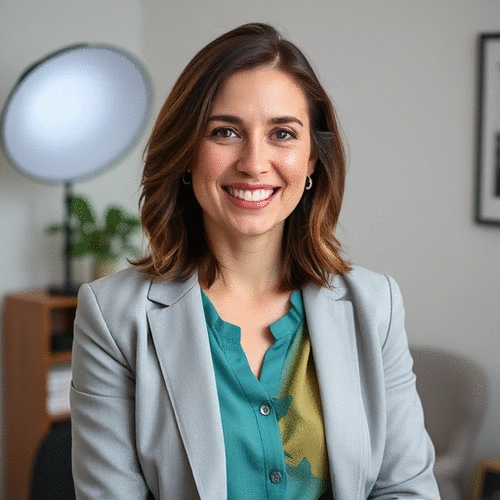Comb Out Lice and Nits Guide
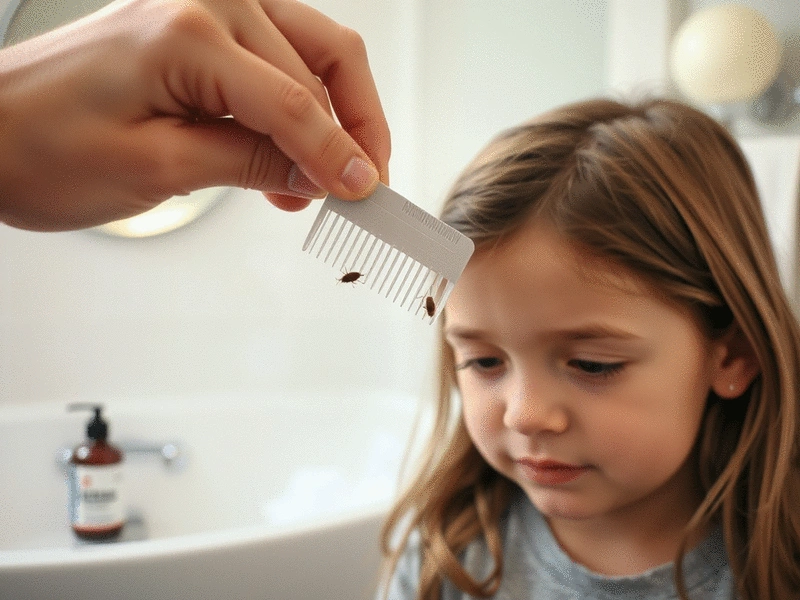
As a parent, navigating the challenges of a lice infestation can feel daunting. Understanding the facts surrounding head lice can not only ease your anxiety but also empower you to manage the situation effectively. Let's unpack the essential knowledge that every parent should have about lice and nits.
What You Will Learn
- Identify Symptoms: Recognize the signs of lice infestation such as persistent itching and visible nits in the hair.
- Lifecycle Awareness: Understand the three stages of lice - eggs (nits), nymphs, and adults - and their implications for treatment.
- Emotional Support: Learn the importance of reassuring your child and addressing the stigma associated with lice.
- Follow-Up Care: Discover the significance of repeated combing sessions and when to consult a pediatrician if lice persist.
- Expert Recommendations: Implement effective follow-up treatment strategies recommended by healthcare professionals.
Lice Lifecycle Stages and Follow-Up Care Flow
Understanding the head lice lifecycle and the necessary steps for complete removal is crucial for effective management.
Understanding Lice and Nits: What Every Parent Should Know
As a parent, discovering that your child has head lice can be an overwhelming experience. However, understanding the basics about lice and nits can help you manage the situation with confidence. In this section, we'll delve into the symptoms of infestation, the lifecycle of these pesky insects, and what the term pediculosis means for your child's health.
Recognizing Head Lice Infestation Symptoms
Identifying the symptoms of a lice infestation is crucial for early intervention. The most common signs include:
- Persistent itching: This is often the first indication of lice, caused by an allergic reaction to lice bites.
- Red, inflamed scalp: Scratching may lead to irritation and redness.
- Seeing live lice: Adult lice are small, about the size of a sesame seed, and can be hard to spot.
- Nits in the hair: These are tiny, white eggs attached to hair shafts, typically near the scalp.
If your child is exhibiting any of these symptoms, it’s essential to act quickly. Remember, lice can spread easily among children, especially in close-contact environments like schools or playdates!
Understanding the Lifecycle of Lice and Nits
To effectively combat head lice, it's essential to understand their lifecycle. Lice undergo three stages:
- Eggs (Nits): These are laid close to the scalp and hatch in about 7-10 days.
- Immature Lice (Nymphs): After hatching, nymphs mature into adult lice in about 9-12 days.
- Adult Lice: An adult louse can live for 30 days on a human scalp and can lay up to 100 eggs during its lifespan!
Understanding this lifecycle helps in determining how long a lice infestation may last and why thorough treatment is necessary to break the cycle.
What is Pediculosis and How Does It Affect Children?
Pediculosis is the medical term for a lice infestation. While it is not a disease, it can cause significant discomfort and anxiety for both children and parents. The embarrassment and stigma associated with lice can affect a child's self-esteem and social interactions. It’s important to reassure your child that lice can affect anyone, and they are not alone in this situation.
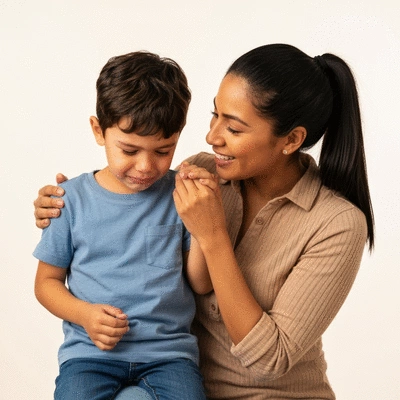
At Lice Nits, we strive to provide you with the knowledge and tools to tackle head lice effectively. By understanding pediculosis, you can better equip yourself and your child with the right strategies to manage and prevent future infestations.
Pro Tip
Did you know? Regularly checking your child’s hair for lice can significantly reduce the chances of a reinfestation. Try to make it a fun routine, like a weekly "hair check party" with snacks and stories. This not only keeps the process light-hearted but also helps your child feel involved and educated about lice management!
Frequently Asked Questions About Head Lice
Here are some common questions parents have about head lice and nits:
- Q: What are the primary symptoms of a head lice infestation?
- A: The most common symptoms include persistent itching of the scalp, redness or inflammation from scratching, seeing live lice, and finding tiny white eggs (nits) attached to hair shafts near the scalp.
- Q: What are the three stages of the lice lifecycle?
- A: The three stages are: eggs (nits), which hatch in about 7-10 days; immature lice (nymphs), which mature into adults in about 9-12 days; and adult lice, which live for approximately 30 days and can lay up to 100 eggs.
- Q: Why is follow-up care important after initial lice treatment?
- A: Follow-up care, especially repeated combing sessions, is crucial to ensure complete lice removal. It helps catch any missed lice or nits and prevents reinfestation by breaking the lifecycle.
- Q: When should I consult a pediatrician for a lice infestation?
- A: You should consult a pediatrician if lice persist despite multiple treatments, if your child develops a rash or infection from scratching, or if you are unsure about the effectiveness of over-the-counter treatments.
- Q: How can I help my child emotionally cope with a lice infestation?
- A: Talk openly and reassuringly with your child, explaining that lice are common and not a sign of poor hygiene. Encourage them to share their feelings, address any fears, and build their confidence by combating the social stigma associated with lice.
Follow-Up Care: Ensuring Complete Lice Removal
Once you've taken the necessary steps to treat head lice, the journey is not quite over. Follow-up care is essential for ensuring complete lice removal. This includes repeated combing sessions and monitoring for any signs of reinfestation. As a parent, staying vigilant helps you stay one step ahead of these pesky invaders!
Many parents wonder how often they should comb their child’s hair after initial treatment. According to the CDC's recommendations for caring for head lice, it’s important to schedule at least two to three follow-up combing sessions within the next week. This not only helps catch any missed lice or nits but it also reassures your child that they’re on the path to being lice-free!
The Importance of Repeated Combing Sessions
Repeated combing is crucial in the follow-up care process. It helps remove any remaining nits and ensures that no adult lice are left to reproduce. Here are some key reasons why this step is vital:
- Prevention: Reduces the chance of reinfestation by catching any remaining lice.
- Reassurance: Provides peace of mind for both you and your child.
- Monitoring: Helps track the effectiveness of your chosen treatment method.
When you commit to this practice, you empower yourself to manage the situation effectively! For a comprehensive guide, refer to the Nit Combing Guide from the California Department of Public Health. Remember, patience is key; thorough combing takes time and care.
When to Consult a Pediatrician for Persistent Cases
In some cases, you might notice that the lice persist despite your best efforts. If your child continues to scratch their head and you see signs of lice even after treatment, it may be time to consult a pediatrician. Here are some scenarios where professional advice is crucial:
- If you have treated your child multiple times without success.
- If your child develops a rash or infection from scratching.
- If you’re unsure about the effectiveness of over-the-counter treatments.

As a dedicated health educator, I encourage you to trust your instincts! Consulting a healthcare professional can provide additional options and peace of mind.
Expert Recommendations for Follow-Up Treatment
After initial treatment, many parents ask about the best follow-up care practices. Experts recommend a combination of methods to ensure all lice and nits are eliminated. Here are some effective strategies:
- Continue with fine-toothed combing at least twice a week.
- Consider using a second treatment if recommended by your healthcare provider.
- Regularly check household members for signs of lice, especially those who had close contact.
By incorporating these expert recommendations, you'll enhance the effectiveness of your treatment and feel empowered in managing this common challenge!
Supporting Your Child Emotionally Through the Process
Dealing with head lice can be stressful, not just physically but also emotionally. As a parent, it’s essential to support your child through the process. This can make a significant difference in how they perceive and cope with the situation. Remember, communication is key!
Start by talking openly to your child about lice. Explain that while it may be uncomfortable and frustrating, it’s a common issue that many kids face. Encouraging your child to share their feelings can help alleviate anxiety and reinforce their self-esteem.
How to Talk to Your Child About Head Lice
When discussing head lice with your child, consider these tips:
- Use simple, reassuring language to explain what lice are.
- Encourage questions and address any fears they may have.
- Emphasize that lice are not a reflection of cleanliness.
These conversations can empower your child and make them feel more in control of their situation. After all, knowledge is a powerful tool!
Addressing Stigma and Building Confidence
It's unfortunate that many children face stigma around lice infestations. As a parent, we need to combat this by fostering a positive outlook. Let your child know that lice can happen to anyone, regardless of personal hygiene or cleanliness.
Building your child's confidence is essential during this time. Encourage them to talk about their experiences and remind them that they are not alone. Connecting with other parents and families can also help your child feel supported.
Understanding the Social Stigma Around Lice Infestations
Head lice can come with a social stigma that often leads to embarrassment for children. It’s important to recognize that this stigma is largely unfounded. By talking openly about lice and ensuring your child feels supported, you can help lessen the emotional burden.
Consider joining support groups or online communities where parents share their experiences. This can create a sense of belonging, helping both you and your child navigate these challenges together.
Final Thoughts and Resources for Parents
As a parent, it’s crucial to feel equipped with the right tools and information when facing head lice. Remember, you are not alone in this journey, and there are many resources available to help you. At Lice Nits, we believe in empowering families through education and support!
Utilizing the resources available can make a big difference. Whether it’s seeking expert advice, utilizing printable guides, or connecting with support groups, having a plan can ease the stress associated with lice management.
Additional Support: Organizations and Websites
To help you navigate through this process, consider the following resources:
- For comprehensive information on head lice, including treatment options, visit the CDC's Head Lice Information page.
- The American Academy of Pediatrics offers valuable insights and guidance on head lice management.
- You can also find practical advice and treatment services from organizations like Lice Clinics of America.
Each of these organizations offers reliable information that can guide you in dealing with lice effectively. Don’t hesitate to reach out for help!
Printable Guides and Checklists for Easy Reference
Having easy-to-follow guides and checklists can simplify the lice management process. Here are some resources you can look for:
- Printable treatment checklists.
- Hair combing schedules to keep track of sessions.
- Steps for cleaning and disinfecting your home.
These materials can serve as handy reminders and keep you organized during this challenging time.
Educational Materials and Community Resources for Ongoing Support
Consider exploring local community resources that provide support and education on lice management. Libraries and schools often have materials available, and local health departments may offer workshops or informational sessions. Staying informed is key!
At Lice Nits, we’re dedicated to providing families with the tools and resources needed to tackle head lice confidently. Together, we can turn this challenge into an opportunity for learning and growth.
Recap of Key Points
Here is a quick recap of the important points discussed in the article:
- Recognize Symptoms: Watch for persistent itching, red scalp, live lice, and nits in hair.
- Understand the Lifecycle: Familiarize yourself with the stages of lice (nits, nymphs, and adults) to facilitate effective treatment.
- Follow-Up Care: Schedule multiple combing sessions within a week after treatment to ensure complete removal of nits and lice.
- Consult a Pediatrician: Seek professional advice if lice persist after treatment, or if there are signs of infection or rash.
- Support Your Child: Communicate openly about lice to reduce stigma and build confidence during the treatment process.
Popular Posts
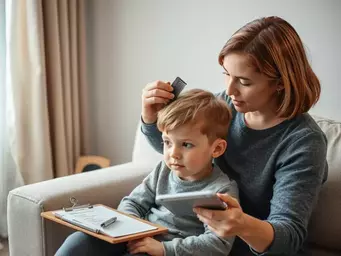 Have you ever felt the panic that arises when you discover head lice on your child's scalp? Understa
Have you ever felt the panic that arises when you discover head lice on your child's scalp? Understa
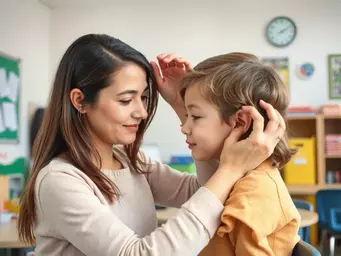 It's surprising how easily something as small as a head louse can disrupt an entire school community
It's surprising how easily something as small as a head louse can disrupt an entire school community
 What if the key to your child's comfort and well-being lies in understanding the aftercare process f
What if the key to your child's comfort and well-being lies in understanding the aftercare process f
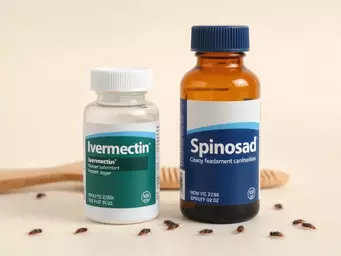 What if a single application could free your family from the stress of head lice? One-dose treatment
What if a single application could free your family from the stress of head lice? One-dose treatment
